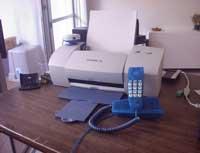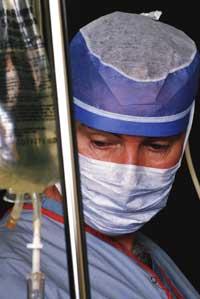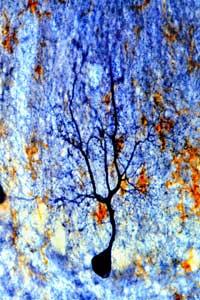Print life

Transplants continue to cause many immune problems, and in the future it will not make much sense to replace a diseased organ with a transplant. This is what the inventors of this special printer claim.
The truth is that this problem is not new, biologists have spent years trying to create entire organs in laboratories. For example, with the intention of collecting the cells of the patient's heart and creating a new heart. In fact, the cells themselves have the greatest immunological similarity with their organs. But this time it is a totally new technique that Americans have presented, who want to create with an inkjet printer.
Without black ink
The main difference with conventional printers is ink composition. Replace normal ink with cells, our cells. The cells of the sick person grow and thus prepare the ‘ink’. It is easy to put in special ink cartridges from the printer... and print it.


Interestingly, it has created hope in organ engineering. In fact, in the laboratory it is easy to duplicate the DNA and multiply the cells. But creating more complex structures, developing tissues and organs, for example, has great difficulties. However, those who have studied the new technique are clear that in 10 years whole organs can be printed: liver, kidney or almost any diseased organ.
In three dimensions
Another difference from conventional printers in our home. Human organs have a three-dimensional structure and the printer, instead of printing it in two dimensions, will have to work in three dimensions to shape the heart, pancreas or any other organ.
To do this, American researchers have used a special gel that somehow fulfills the role of scaffolding. In this way, the cells that flow the printer will be distributed according to the shape of this mold, since for the organ to be functional it is important the spatial position that occupy the components of the organ.
In fact, it is a very special gel. To avoid adverse immune reactions, once the organ is created, the stay will degrade, leaving only the patient's cells. One problem is that if the room doing scaffolding work is removed too soon, due to weight, a fall of the newly created organ can occur. Therefore, substances that reinforce the structure of the organ are being tested. The test has been done with a simple protein that appears on the skin of the body, collagen. And, for the moment, the results are good, organs are getting stronger and stronger.
Canon and Hewlett-Packard have participated in the design of these special printers. They have had to adapt to the new function and following the instructions of the researchers have developed the apparatus of printing live organs. For the moment, they have managed to create organs of five centimeters of diameter and continue to work seriously in the improvement of the technique.
Just like the printers in our house make multicolored drawings, those who will print the organs will have to make complex cellular mosaics. Keep in mind that our organs are not made up of a single type of cells. There are cells that perform very different functions and in the cartridges of the printer will have to introduce a large number of cell types if you want to imitate that complex structure of each organ.
How to feed the organs

Some researchers believe that replacing diseased organs can curb human aging.
But there is still something that has not been achieved: good blood circulation. In short, the complex and three-dimensional networks of blood vessels cross the organs in our body. Food and oxygen should also reach the farthest cell, and as they are introduced into the organ, the veins branch and refine to reach all cells.
Those responsible for the research are convinced that this printer will be able to generate veins, arteries and capillaries. But so far they have not managed to have an exchange of nutrients and oxygen between vessels and cells. They do not know how to print the final structures of blood vessels, the thin ends of the vessels in which this exchange occurs. And without nutrients and oxygen the cells survive very little; they die quickly and the organs are no longer functional. It is no exaggeration to say that the blood circulation network is currently the greatest challenge of the printing technique of the organs.
Despite the difficulties, it is very attractive to create organs with this special printer. Some aim to extend our lives by replacing the diseased organs as they age; the more daring claim that an immortal species could be created. Although it was not possible to print the organs efficiently, scientists have brought ideas that science fiction never imagined. It is not little.
Published in 7K.
Buletina
Bidali zure helbide elektronikoa eta jaso asteroko buletina zure sarrera-ontzian











